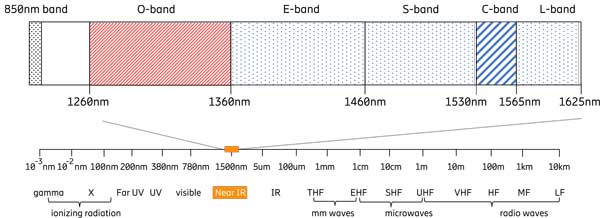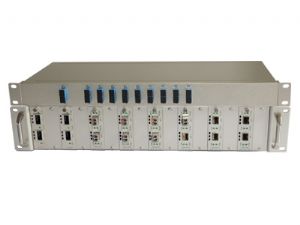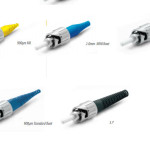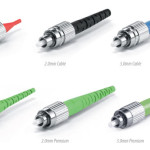WDM helps the network operators to run several transmission wavelengths on the same pair of optical fiber, it increases the bandwidth capacity among sites. The O-band WDM wavelengths range between 1260nm and 1360nm, compared with C-band featured with lower attenuation, and higher chromatic dispersion, it features a very low chromatic dispersion, but a higher attenuation per kilometer.
O-band was the “original” band, the first for which we learned how to build lasers and detectors. Over time, the very low chromatic dispersion has allowed the use of particularly cheap laser sources, making O-band the preferred choice for short-reach optical interconnects, for which the higher attenuation per km is not a problem.
O-band solutions provide an easy and economical method for migrating to 100 Gb/s and is dedicated to access and mobile base station uplink network. Using O-band-based multiplexers and modules allows operators to cover distances of up to 30km, while maintaining their required passive infrastructure for easier management and lower energy consumption.
The following are some O-Band wavelength plan considerations in the network
• Low dispersion in O-Band allows simple 25G NRZ transmission without the need for dispersion compensation.
– 25G DML transmission is possible in O- Band (up to ~1320nm)
– 25G EML transmission is possible in O+ Band (up to 1360nm)
• 25G O-Band sources and filters exist that can be used directly or adapted for higher power operation for NG-EPON.
– Cooled 25G DML/EML TOSAs for 100GBASE-LR4 (~1295-1309nm, 800GHz grid)
– Uncooled 25G DML TOSAs for 100G-CWDM4 (1270-1330nm, 20nm grid)
• Spectrum is tight due to the need to coexist with 10G-EPON US (UpStream) at 1260-1280nm and avoid the zero dispersion at1302-1324nm to avoid FWM penalties.
– Forces use of narrow LAN-WDM channel spacing and narrow US-DS diplexing filters which is not ideal for low cost due to the need for collimated beams.
– Prevents the full adoption of the existing 100GBASE-LR4 grid due to FWM (Four-wave mixing).
• High-loss PMDs will require optical amplification. SOAs must be used for amplification in O-Band, but are not as ideal as EDFAs in C/L-Band.
– SOA booster amps have more limited output saturation power than EDFAs
– SOA pre-amps have considerably higher noise figures than EDFAs








